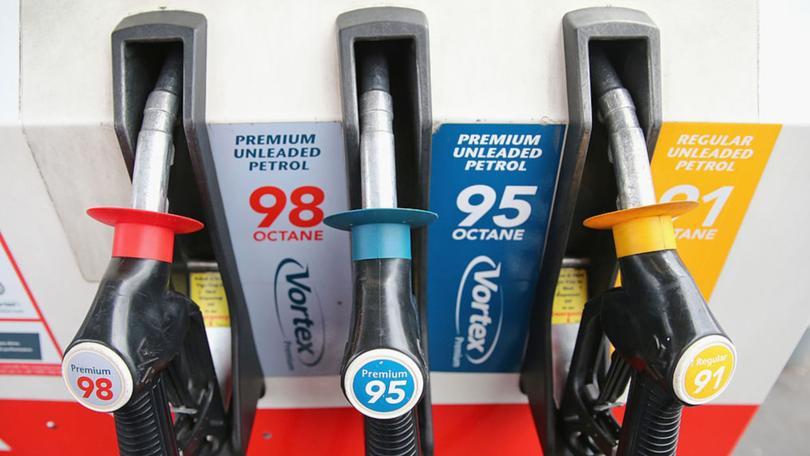ACCC reveals how Aussie motorists can save up to $740 on fuel annually

Fuel prices fluctuate in cycles across Australia, mostly in cities, and the Australian Competition & Consumer Commission (ACCC) has acknowledged just how “frustrating” that can be for cash-strapped motorists.
Understanding those cycles, and shopping around can help save motorists hundreds of dollars each year, and the consumer watchdog has now revealed the easiest way to do so.
Aussie motorists spend about $100 a week on petrol, according to Australian Automobile Association data from early 2024.
Sign up to The Nightly's newsletters.
Get the first look at the digital newspaper, curated daily stories and breaking headlines delivered to your inbox.
By continuing you agree to our Terms and Privacy Policy.As geopolitical factors continue to keep the nation’s petrol prices high, amid other cost of living pressures, an extra 30c per litre spent on fuel during a petrol price cycle peak can really batter the family budget.
The fuel cycles for each state — excluding Canberra, Hobart and Darwin, which don’t technically have them — fluctuate at different speeds.
Perth has a weekly cycle, Adelaide has a fortnightly cycle, and Sydney, Melbourne and Brisbane have cycles that range from between four to seven weeks — but the length of those cycles is continually changing.
Diesel prices, however, do not move in cycles.
“The ACCC fully recognises that petrol price cycles can be frustrating for motorists. However, by understanding how they work, motorists can take advantage of significantly lower petrol prices at the lowest point of the cycle,” ACCC said on Tuesday.
While the longer cycles make it difficult to only fill up during cycle lows, the ACCC said: “There are still opportunities to save on fuel.”
“A perception may be that all retailers increase prices at once, but our research shows this isn’t the case.”
That’s why the watchdog says checking state-specific petrol price monitoring apps before filling up is the best way to save money at the bowser, and earlier this year it counted over 40 of the apps that were free to use.
Those apps monitor changes to fuel prices, which petrol stations are legally required to report within 30 minutes of a price change, allowing motorists to shop around for the cheapest options even during cycle peaks.
How much can I save?
In the states where petrol price cycles are observed, ACCC calculations found that motorists who fill up 50L of regular unleaded petrol weekly, shop around and head to the bowser during cycle lows can save up to $740.
Here are the possible savings by state, based on 2023 data:
Perth – $740
Adelaide – $486
Sydney – $407
Melbourne – $333
Brisbane – $242
“The cycles involve a sharp increase in petrol prices, usually led by one or more retail sites, with many others increasing prices over time. This is followed by a slower decline in prices across the market,” ACCC said.
In Perth, where many motorists understand the weekly price cycle, 30 per cent of petrol was bought on Tuesday — the cheapest day of the cycle — in the first half of 2023, ACCC said.
But even where petrol price cycles are not observed, shopping around for the cheapest prices before filling up can still save motorists hundreds annually.
Canberra – $278
Hobart – $260
Darwin – $156
What about in regional locations?
The ACCC observed in 2023 data that while petrol prices in most regional locations did not move in the same cycles as their respective capital cities, 11 locations did.
“Motorists in these locations can look for similar opportunities to take advantage of petrol price cycles,” ACCC said.
In New South Wales, the Central Coast, Newcastle, Singleton, Tweed Heads South and Wollongong all showed cyclical petrol price movements.
In Victoria, Koo Wee Rup — 63km southeast of Melbourne — also followed the capital city price cycle.
In Queensland, Caboolture, Gold Coast, Ipswich and Toowoomba, petrol price cycles are also observed.
And in South Australia, Gawler — about 40km north of Adelaide — also followed the capital city price cycle.
“The petrol price cycles in some of these locations closely followed the price cycles in the capital city closest to them, while in other locations their price cycles were less regular than the closest capital city,” ACCC said.
Which apps should I download?
There are four government-run apps showing real-time petrol price updates, servicing Western Australia (FuelWatch), New South Wales and the ACT (FuelCheck), the Northern Territory (MyFuel NT) and Tasmania (FuelCheck TAS).
But motoring groups such as the Royal Automobile Club of Queensland and the Royal Automobile Association of South Australia also have real-time fuel price checking apps.
There are also a number of commercial offerings as well, such as MotorMouth and PetrolSpy.
“Fuel prices are also available in navigation apps such as Waze and Google Maps,” the ACCC said.
The ACCC website also gives an ongoing analysis of price cycles by state, and offers regular buying tips based on current data.
Originally published on 7NEWS
